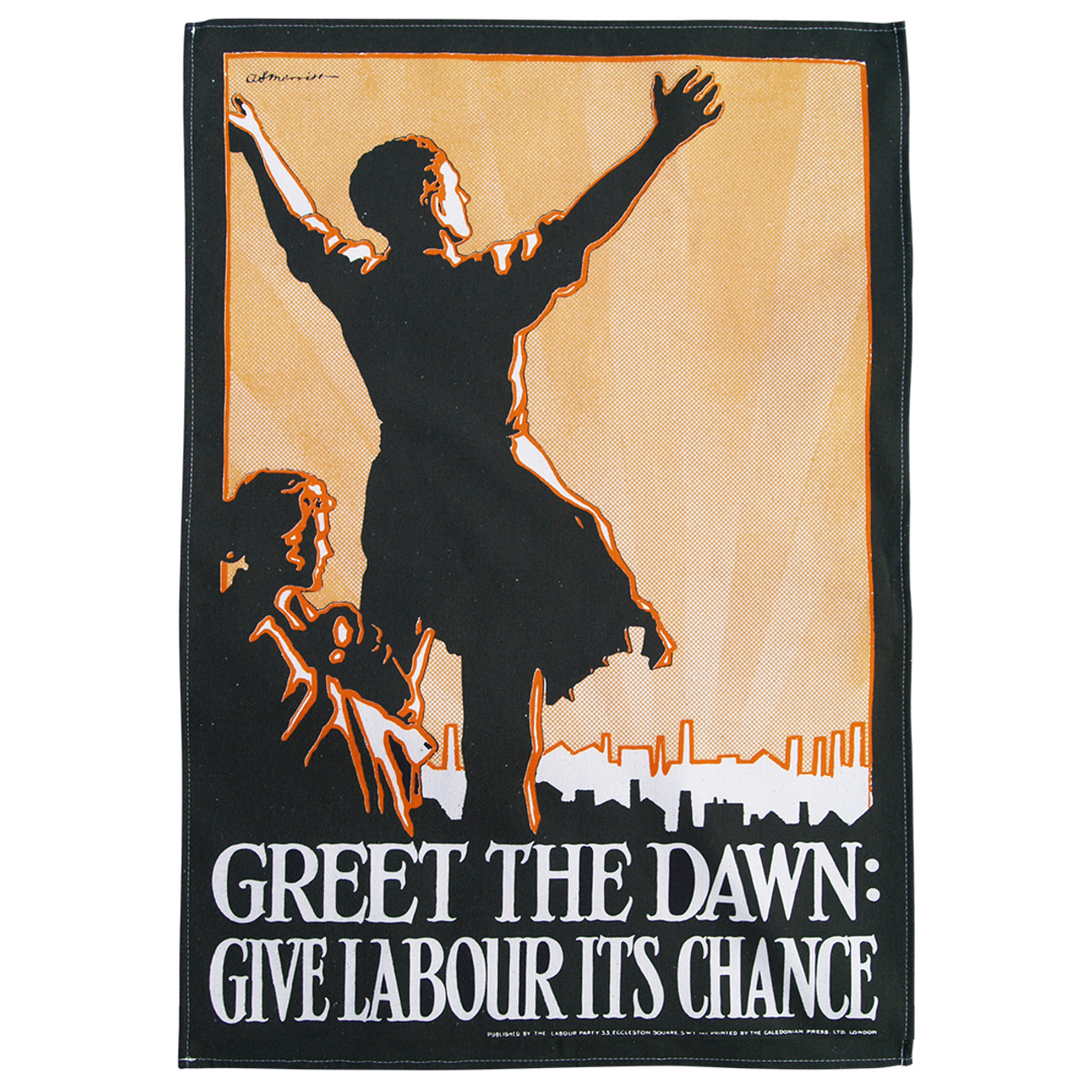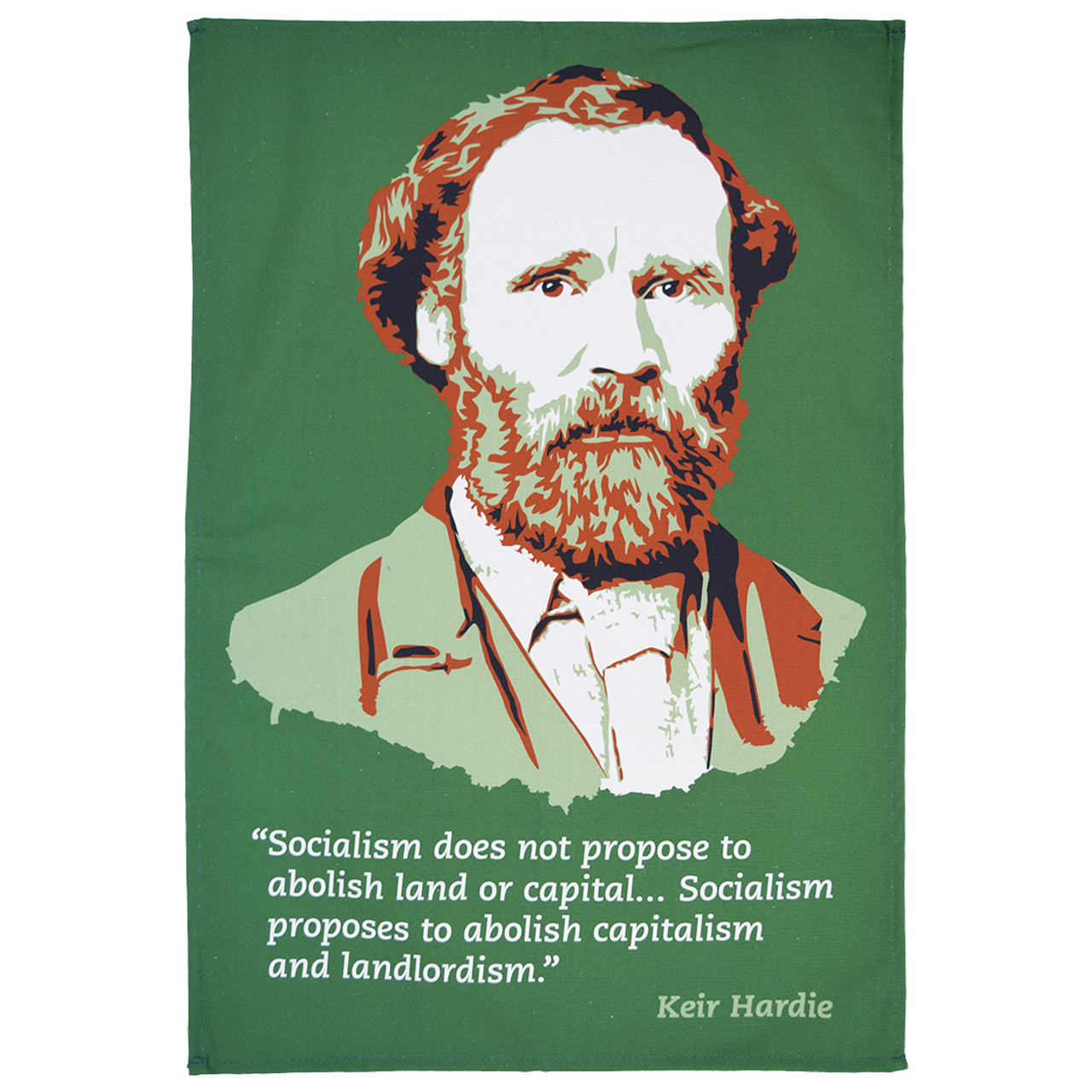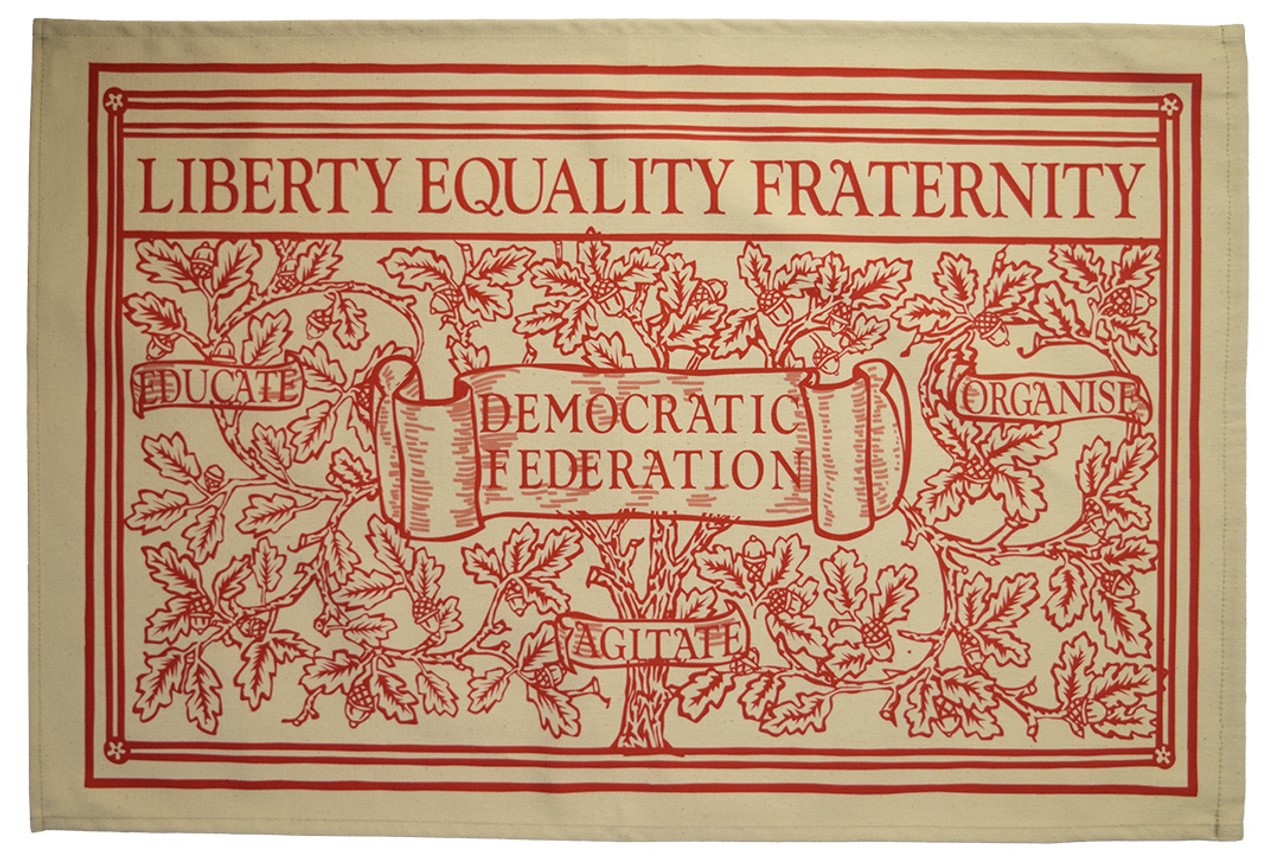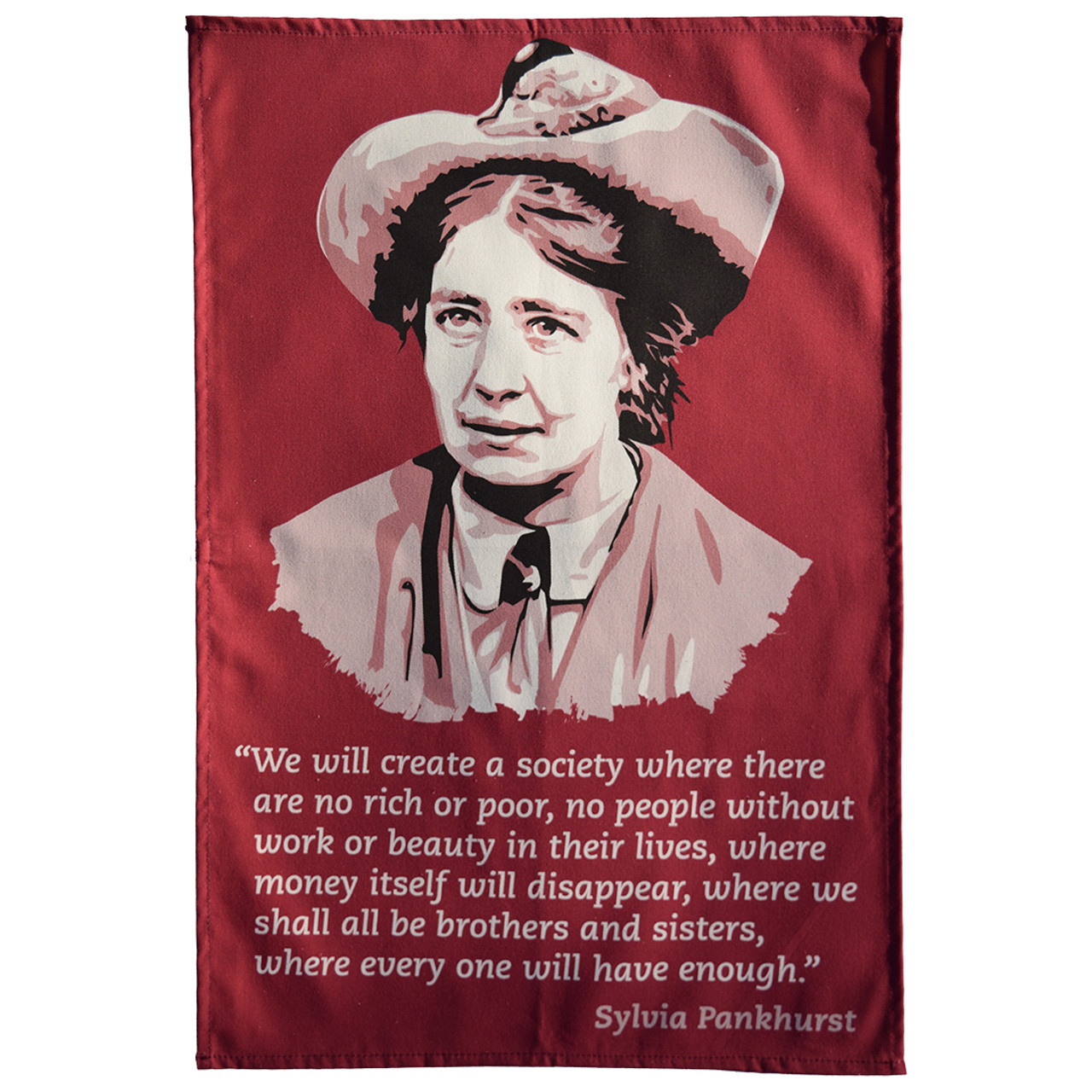The ILP: A New Party for Labour
Posted by Pete on 14th Jan 2025
Trying to influence the Liberal Party wasn't working, so the UK labour movement changed tack in the 1890s...
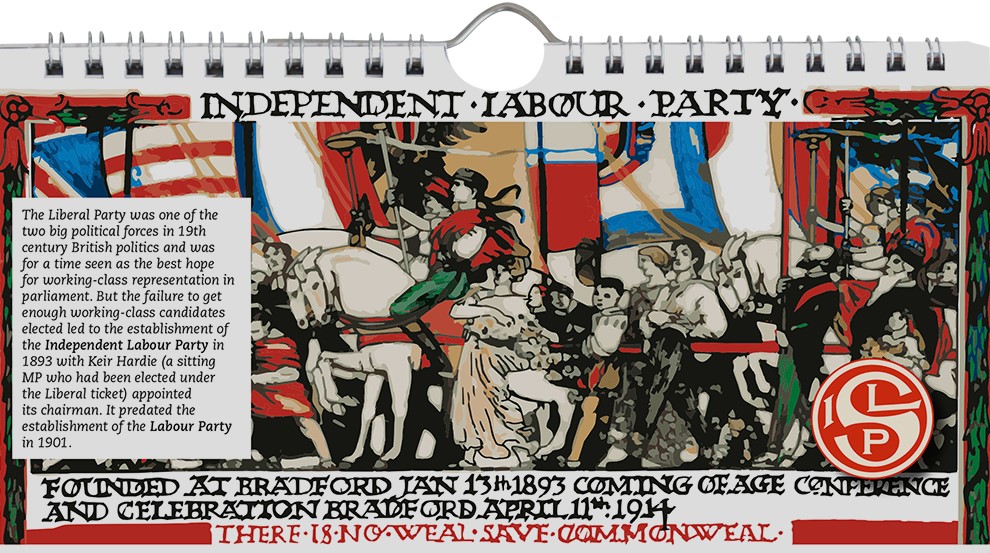
The Labour Party, created in 1906, wasn’t the first party of labour in the U.K.
On this day in 1893, the Independent Labour Party (ILP) was founded by socialists and trade unionists in Bradford.
It became one of the most important radical organisations in the history of modern Britain.
In the 1923 election, the Labour Party sought a chance to govern for the first time
See the 'Greet The Dawn' Labour tea towel
During the half-century after the Tolpuddle Martyrs in 1833, the power of organised labour made huge gains.
Trade unions won new legal rights for themselves, and their membership grew.
But by the 1880s, the labour movement still had a big problem: it didn’t have a political party to defend working-class interests in Parliament.
Meanwhile, the capitalist class had not just one but two parties: the Tories and the fractionally less conservative Liberals.
For a lack of alternative, the trade union movement was forced into a strategy of selective support for Liberal candidates supportive of labour struggles: the so-called ‘Lib-Lab’ approach.
The Fabian Society, created in 1884, also took this approach, trying to persuade the Liberal Party to convert to socialism with the power of ideas.
But labour organisers on the ground, like James Keir Hardie, soon realised that this political strategy wasn’t working for the working class.
When push came to shove, the Liberal Party kept on siding with capital over labour, and it always gave its Lib-Lab candidates lower priority.
James Keir Hardie was a radical of his time: supporting labour, women's rights, free schooling, pensions and Indian self-rule, while wearing a tweed suit to parliament
This realisation by working-class activists generated momentum for a new political party of labour, independent of and opposed to the Tories and the Liberals.
British Marxists including William Morris and Eleanor Marx had already begun to experiment with this strategy, creating the Social Democratic Federation (SDF) in 1881.
But the appetite for a labour party independent of the Liberals was now spreading to the wider Left, too.
In the General Election of 1892, three MPs were successfully elected as independent labour candidates without Liberal support, including Keir Hardie in West Ham.
A conference was then held in Bradford, a working-class hub, between 14-16 January 1893 to discuss working-class political strategy.
The delegates decided to create the Independent Labour Party, with Keir Hardie as its first chair.
The ILP was designed to be a democratic and decentralised organisation, taking a ‘big-tent’ approach that welcomed the many different kinds of socialism then popular in Britain, from Marxism to Christian socialism.
William Morris designed the membership card for the Social Democratic Federation (SDF), Britain's first socialist political party, a decade before the ILP
See the Liberty Equality Fraternity tea towel
In 1900, the ILP played a key role in forming the Labour Representation Committee, and then the Labour Party in 1906, in collaboration with other working-class and socialist formations like the SDF and the Fabians.
The new Labour Party managed to at last win over the major trade unions, and soon ILP members were being elected to Parliament under the Labour umbrella.
During the early twentieth century, the ILP represented a socialist middle point between the conservatism of the Labour leadership and more revolutionary forms of socialism further to the left.
The ILP was the source of committed activists for the early Labour Party, who agitated for more radical Labour policy across the board.
During the First World War, the ILP was an honourable exception to most Labour MPs’ eager support for the imperialist bloodbath in Europe, and it was also more supportive of women’s suffrage than the rest of the Labour Party.
After the Russian Revolution of 1917, the left-wing of the ILP including activists like Shapurji Saklatvala left to form a British communist party, but the ILP continued to be the main focus of left-wing socialist energy inside the Labour Party.
The ILP promoted socialist anti-imperialism during the interwar period while the Labour leadership remained complicit in the exploitative violence of the British Empire.
ILP activists also demanded a far more anti-capitalist attitude than the Labour Right, including a more ambitious approach to nationalisation, wealth redistribution, and welfare.
The Pankhurst family were founding members of the ILP in the 1890s
See the Sylvia Pankhurst tea towel
These tensions came to a head during the Great Depression of the 1930s, and in 1932 the ILP voted to disaffiliate from Labour.
ILP members believed that Labour was too timid to respond to the crisis of capitalism with a positive program of socialist transformation.
The ILP then spent the 1930s and 1940s demanding ‘socialism in our time,’ decolonisation, and the defeat of fascism in Europe.
Outside of Labour, the ILP retained a few MPs into the 1940s, but it never recovered as a parliamentary force after disaffiliation, eventually withering away in the 1970s.
Nevertheless, ILP activists went on to have far more constructive and impactful careers than the right-wing Labour figures who had shut them out.
Fenner Brockway, for example, became one of the main British activists for decolonisation after WW2 while Labour still continued to endorse the British Empire.
The Independent Labour Party was one of the most important organisations in British history, and the labour movement it helped build wouldn’t have achieved what it has without a century of ILP commitment to the freedom of the working class.

